Cell Ranger pipelines run on Linux systems that meet these minimum requirements:
- 8-core Intel or AMD processor (16 cores recommended), with support for instruction sets including at least SSE4.2. This includes Intel CPUs released since 2008 (Core i5/i7 or newer) and any AMD CPU since 2011. Future versions of Cell Ranger will require CPUs supporting AVX instructions; Intel and AMD CPUs have supported these since 2011 (Intel Xeon E3/E5 or newer).
- 64GB RAM (128GB recommended).
- 1TB free disk space.
- 64-bit CentOS/RedHat 7.0 or Ubuntu 14.04 - See the 10x Genomics OS Support page for details.
Cell Ranger v6.1 was the last version that supported CentOS/RedHat 6 or Ubuntu 12.04.
The pipelines also run on clusters that meet these additional minimum requirements:
- Shared filesystem (e.g. NFS)
- Slurm batch scheduling system
Most software dependencies come bundled in the Cell Ranger package. However, cellranger mkfastq also requires Illumina bcl2fastq v2.20 or later.
-
Cell Ranger runs locally by default (or when specified as
--jobmode=local), using 90% of available memory and all of the available cores. To restrict resource usage, please use the--localmemand--localcoresoptions (seecellranger vdj--help). -
Many Linux systems have default user limits (ulimits) for maximum open files and maximum user processes as low as 1024 or 4096. Because Cell Ranger spawns multiple processes per core, jobs that use a large number of cores can exceed these limits. We recommend higher limits:
| Limit | Recommendation |
|---|---|
| user open files | 16k |
| system max files | 10k per GB RAM available to Cell Ranger |
| user processes | 64 per core available to Cell Ranger |
The following plots are based on time trials using Amazon EC2 instances and version 7.0 of Cell Ranger. Observed performance will be impacted by other factors besides memory, including library type (whole transcriptome vs. targeted), read depth, number of cells, number of cores/threads, and I/O. The plots below are meant to convey how increasing memory beyond the minimum and recommended levels may impact runtime for large datasets run with cellranger multi, cellranger count, and cellranger aggr, but may not be representative of your dataset.
Shown below is cellranger multi wall time as a function of memory for a 60k cell 3' Cell Multiplexing dataset:
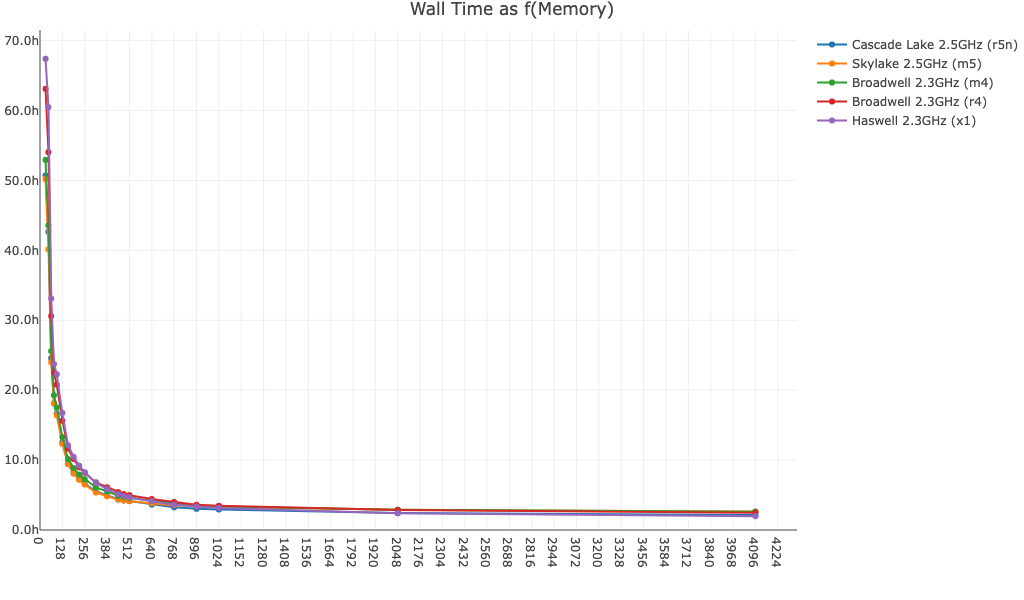
Here is cellranger multi wall time as a function of memory for a 16-plex Fixed RNA Profiling dataset run with BAM file generation on and off:
- BAM file generated :
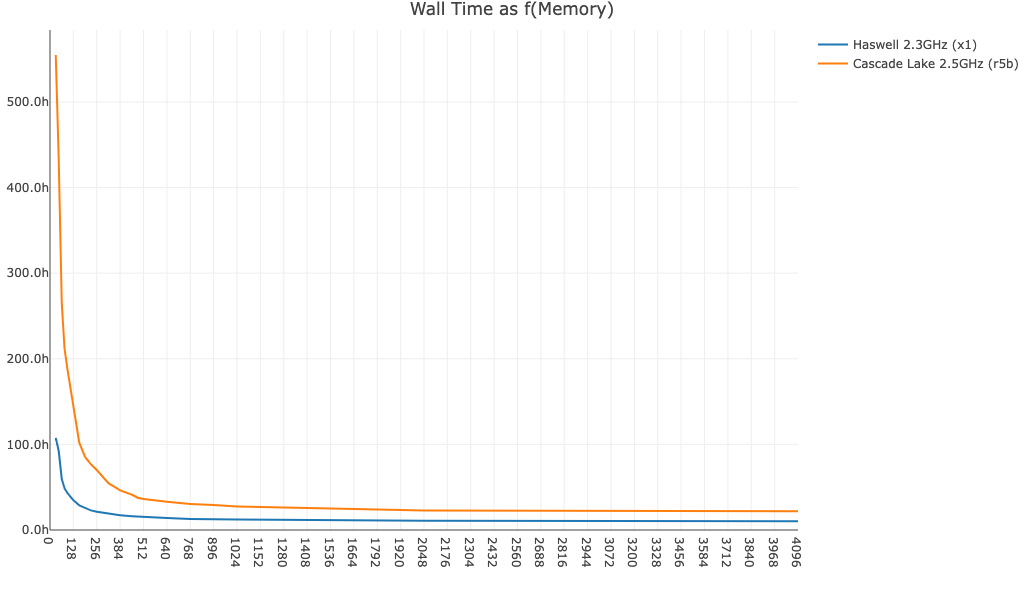
- No BAM file generated :
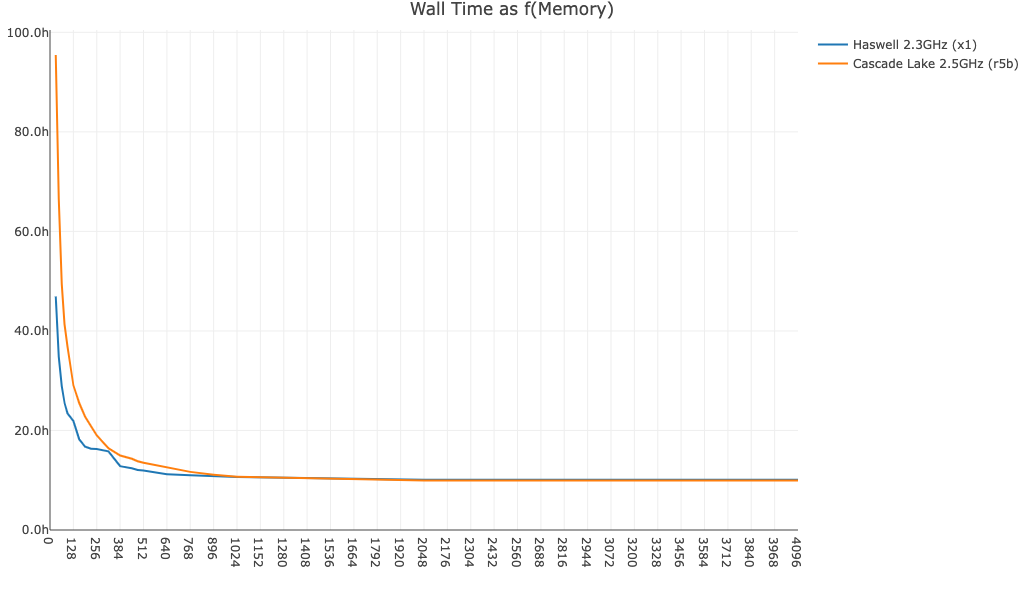
Here is cellranger count wall time as a function of memory for a 20k PBMC high-throughput dataset:
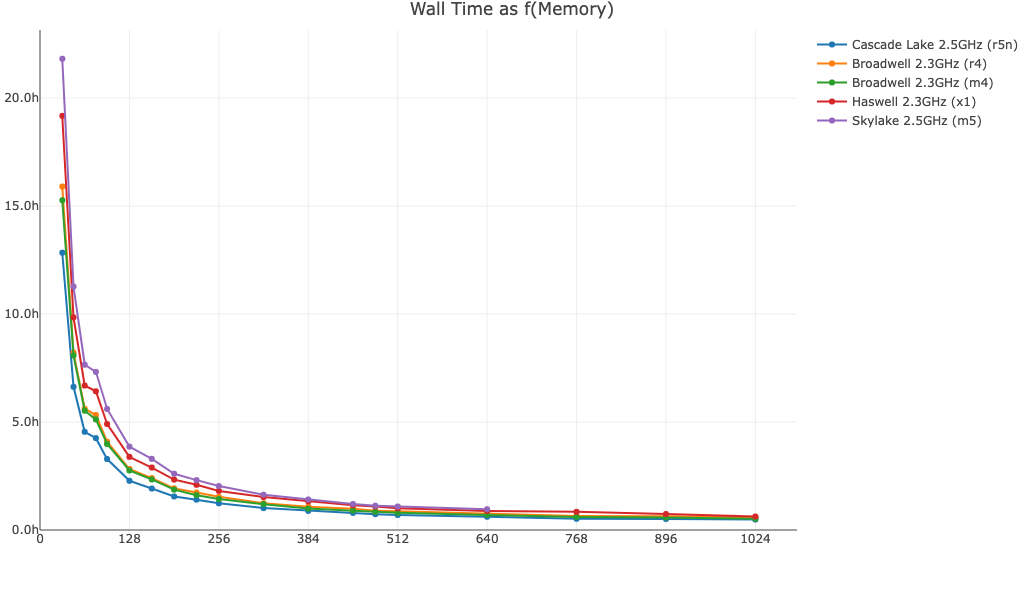
Here is cellranger aggr wall time as a function of available memory for a 250k cell dataset. In general, performance can be improved by allocating more than the minimum 64GB of memory to the pipeline.
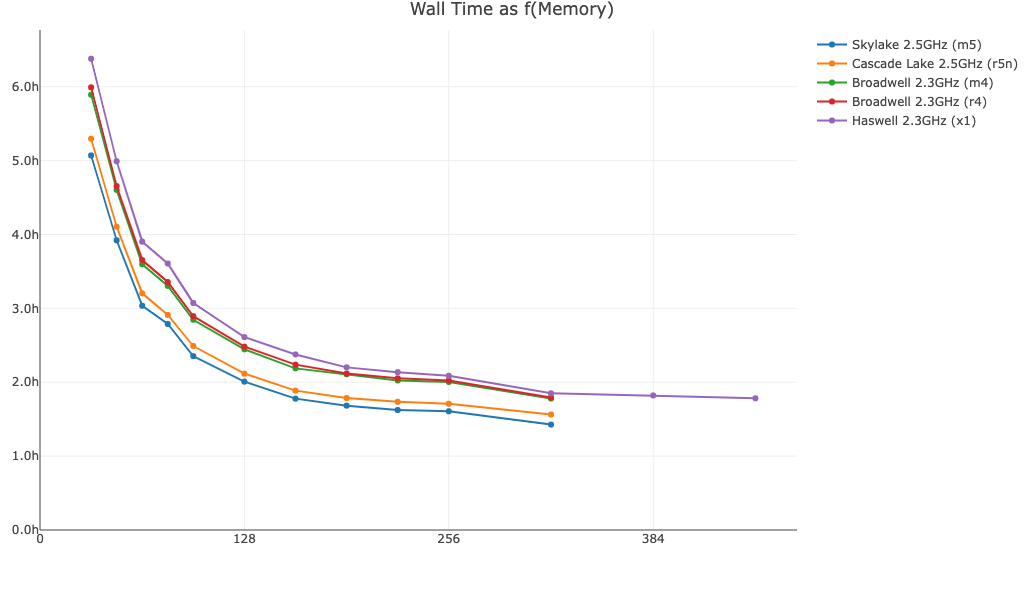
Walltime as a function of memory for a 10k PBMC V(D)J T cell dataset, read depth ~6,500 reads/cell, run with Cell Ranger v6.1.2:
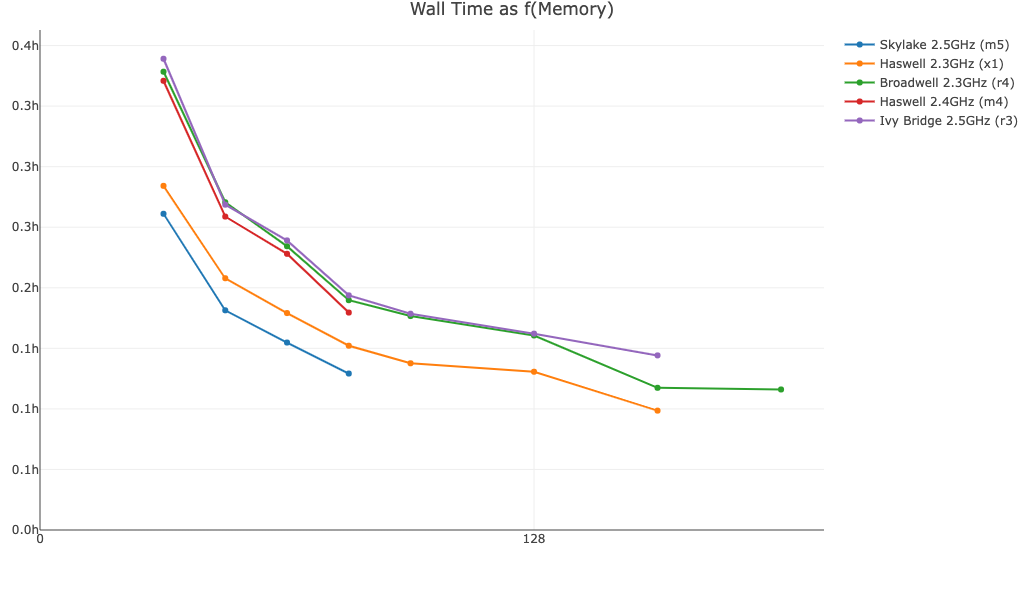
Walltime as a function of memory for a 10k PBMC BCR Antigen Capture dataset run with Cell Ranger v7.1.0:
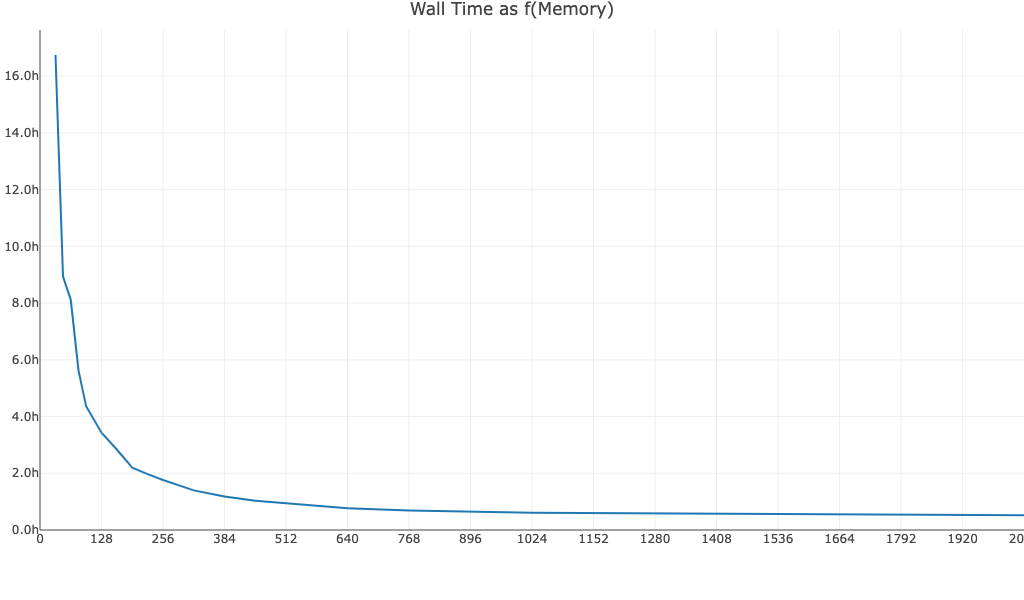
For similar inputs, walltime as a function of memory is similar for TCR and BCR Antigen Capture datasets.